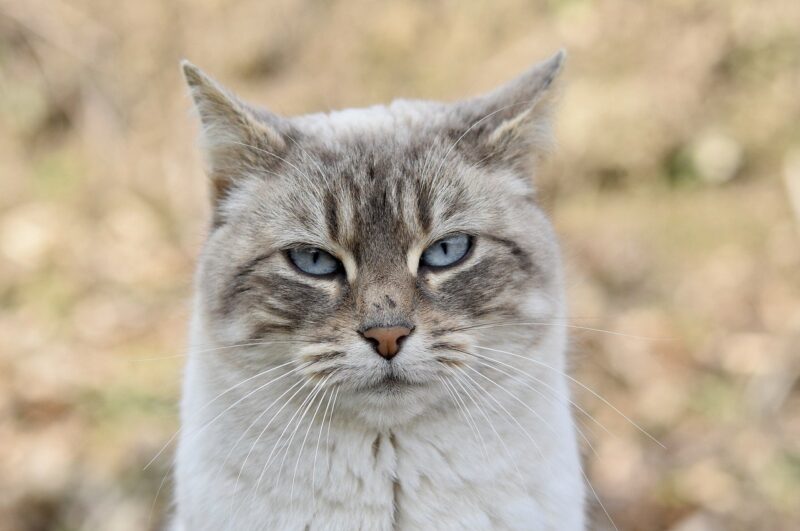How Cats Use Scent to Communicate: Understanding Your Feline’s Marking Behaviors
November 13, 2024

Cats are fascinating creatures with a unique way of communicating that goes beyond simple vocalizations. One of the most primitive and, perhaps, the most effective methods they employ is through scent. This article explores how cats use scent to communicate, the various marking behaviors they exhibit, and the meanings behind them.
The Science of Scent Communication in Cats
Scent communication in cats is rooted in their biology. Cats possess a highly developed sense of smell, which is significantly more sensitive than that of humans. While an average human has about 5 million olfactory receptors, cats boast a staggering 50 to 80 million. This remarkable ability allows them to interpret their environment profoundly and communicate with each other through scent.
The primary organ responsible for scent detection in cats is the vomeronasal organ (VNO), also known as Jacobson’s organ. This specialized structure is located on the roof of a cat’s mouth and helps them process pheromones—chemical substances secreted by other cats or animals that convey social information.
1. Scent Marking: A Cat’s Way of Claiming Territory
One of the most notable behaviors related to scent communication is marking territory. Cats are territorial animals, and they use scent marking to communicate their presence and assert their dominance over a specific area. Here are different ways they do this:
- Scratching: When cats scratch surfaces, they not only sharpen their claws but also leave behind scent deposits from glands located in their paws. This physical reminder acts as a way to signal to other cats that this territory is claimed.
- Urine Marking: Male cats are known for urine marking to delineate their territory. They do this by spraying urine vertically on surfaces, while females may also engage in this behavior, particularly when in heat. The scent is specific, carrying pheromones that attract potential mates while informing rival cats about their presence.
- Face and Body Rubbing: Cats have scent glands located on their face, chin, and forehead. When they rub against objects or even humans, they transfer their scent, marking those areas as theirs and creating a social bond.
Each of these behaviors serves the vital purpose of establishing boundaries within their habitat and communicating their presence to other felines. To a cat, these scent cues can provide valuable information about potential threats, the social structure of their environment, and mating opportunities.
2. The Role of Scent in Social Interactions
In addition to marking territory, scent communication plays a critical role in social interactions among cats. The ability to convey information through scent is essential for understanding hierarchies, identifying other cats, and even facilitating mating behaviors. Here are some aspects of social scent use in cats:
- Pheromones and Mating: Female cats release specific pheromones when they are in heat to attract males. These scents signal their readiness to mate, allowing male cats to determine when and where to seek potential partners. Pheromone messages are a critical component of feline mating behaviors, helping to ensure successful reproduction in often competitive environments.
- Scent Recognition: Cats can recognize each other through unique scent profiles. This recognition extends to their humans as well. When introducing a new cat to a household, it is helpful to allow both animals to become familiar with each other’s scent through shared items like blankets or toys before direct contact occurs. This practice eases the transition and allows for a more harmonious relationship.
- Scent-Cued Memory: Cats also utilize scents for memory reinforcement. The scents associated with their homes, food, litter boxes, and even humans help create familiar environments. When a cat returns to an area, the familiar scents help them navigate their surroundings and identify safe spaces.
Scent is a vital part of their social interactions, providing an understanding of their surroundings and relationships within that environment.
3. How Environmental Factors Affect Scent Communication
Environmental factors can significantly influence how effectively cats communicate through scent. A few key factors include:
- Habitat Changes: Changes in a cat’s environment, such as a new house, moving furniture, or introducing new pets, can alter the scent landscape. Cats may feel anxious during these transitions due to the disruption of their familiar scent cues. This is why it’s essential to provide safe areas with familiar scents when introducing cats to new environments.
- Weather Conditions: Weather conditions can also change how well scents travel. For example, on rainy days, scents can diffuse more widely, while windy days may scatter scents, making it harder for cats to detect them. Changes in humidity also affect olfactory detection, which could impact how cats scent-mark and communicate with each other.
- Presence of Other Animals: The presence of other animals can introduce new scents into an environment. This can lead to increased marking behaviors as cats feel the need to re-establish their own scent in the space. Territorial disputes may arise from unfamiliar scents, often leading to aggressive behaviors if not managed properly.
Understanding these factors allows cat owners to create more enriching environments that cater to their feline companions’ needs and promote healthy communications among their pets.
4. Improving Cat Communication Through Scent Enrichment
As cat owners, we can enhance our feline friends’ communication through scent enrichment. Here’s how you can promote healthy scent-sharing behaviors, particularly with indoor cats:
- Scented Toys and Scratching Posts: Consider using catnip-infused toys and scratching posts that encourage their natural marking behaviors while providing sensory stimulation. These scented toys can engage your cat both mentally and physically, satisfying a need to mark and explore their territory.
- Pheromone Diffusers: Products like pheromone diffusers can help keep your home’s environment calm and stable. They mimic the natural pheromones that cats release, which can relieve stress and anxiety, especially during significant changes such as moving or introducing new pets.
- Encourage Exploration: Provide different scents for your cats to explore by ensuring they have access to various surfaces and areas. This may include allowing them to access outdoor spaces (safely) or introducing them to new areas of the home at their own pace. This exploration helps reinforce their scent communication and marking behaviors in a relaxed manner.
By facilitating scent enrichment, we can help our cats fully express themselves and support their innate behaviors aligned with their communication needs.
Conclusion: Understanding Your Cat’s Scent Marking Behaviors
Cats use scent to communicate a wide array of signals to other felines and their humans. As we delve deeper into our cats’ world, we become better equipped to understand their behaviors and needs. Whether through scratching, rubbing, or urine marking, scent serves as a crucial tool for communication in the feline kingdom. By enhancing their environments with scent-based enrichment and recognizing the significance of marking behaviors, we can create a more fulfilling life for our cats, ensuring they feel secure and understood in their domestic landscapes.
Let us continue to observe our cats closely, appreciate their subtle cues, and enjoy the rich and mysterious world of scent communication that our feline companions navigate every day.








